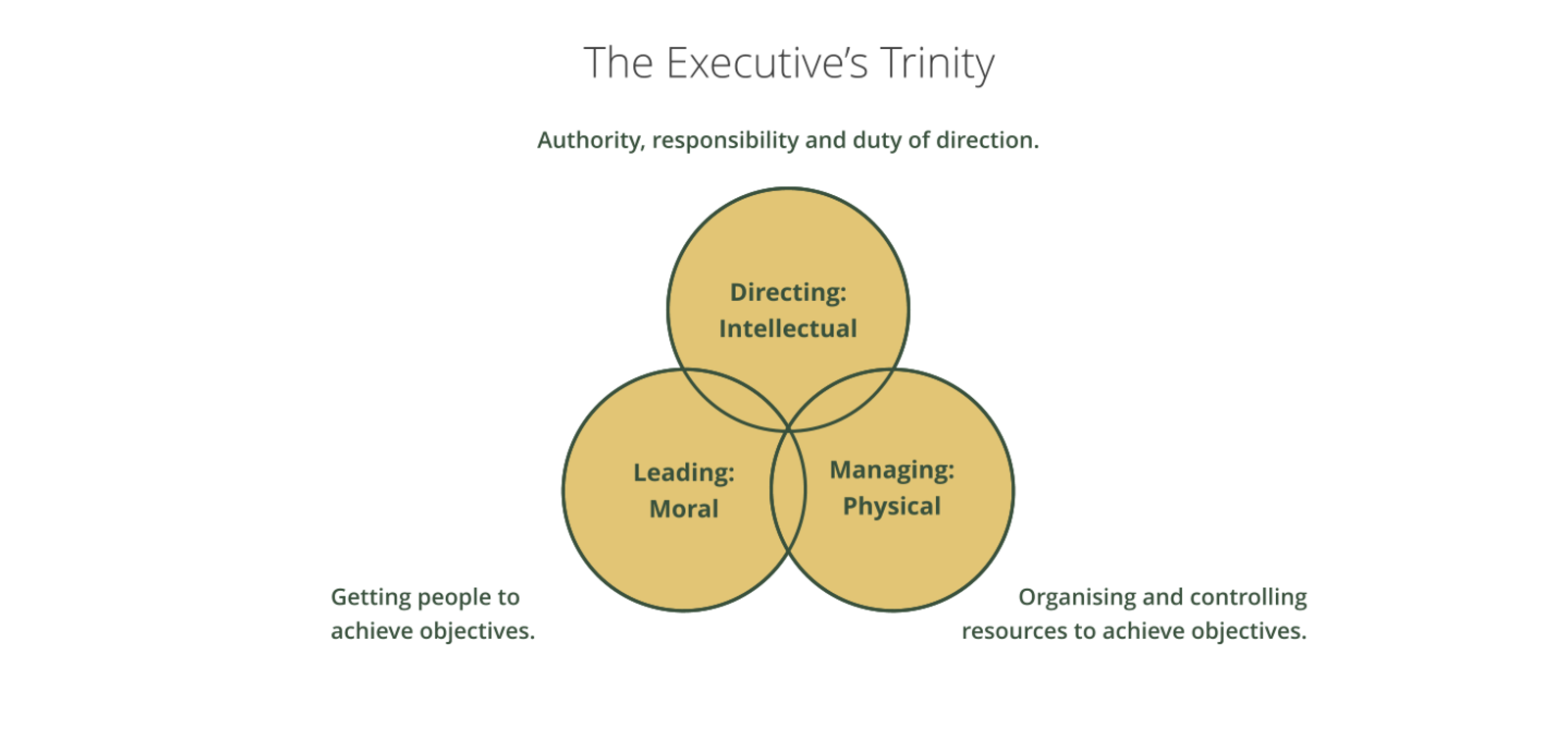The Executive’s Trinity
“
The leader is committed, passionate, and determined. The director is detached, calculating and flexible. The manager is engaged, pragmatic and realistic
”
If you had picked up a book fifty years ago about the job of running an organisation, it would almost certainly have had the word ‘management’ in the title. During the 1980’s, it was suggested that whilst management is fine in a stable environment, change requires leadership. As the rate of change continued to increase, so did the emphasis on leadership. Today, running a business is understood to be a matter of leadership. Management is regarded as old fashioned or worse. That is a problem.
The reason that the theme of leadership arose in the 1980’s is that by then the inadequacy of the idea that organisations are machines and running them was an engineering task was beginning to be obvious. If organisations are organisms made up of people, then the performance of the organisations will depend to a large part on the motivation of the people in them, and they need to be led.
The military have known that for centuries. But they also know that efficient management is part of any general’s job. If his highly motivated men arrive on a battlefield without food and ammunition and the artillery got lost along the way, they will probably fight bravely and lose. There is a well known military saying that amateurs talk tactics and professionals talk logistics.
“
People only change when they are ready, willing and able. Leaders address all three: head, heart and hand
”
Management matters, and it always will. So does leadership. So does something else which nobody in the business schools seems to have noticed. In the military it is called ‘command’. In business we might call it ‘directing’. Being part of the group running a business organisation requires mastering three sets of skills: the executive’s trinity.
In the business world, we not only suppress management, but lump directing and leadership together. However, the skills required are quite different. Because we don’t distinguish them, we can get good leaders who are poor directors and vice versa, and we develop people as leaders and then expect them to be able to demonstrate the abilities of directing which they have not been trained in. Executives need to be able to deal with concepts, things and people. Not surprisingly, the individuals who master all of these challenges in equal measure are very rare. So we need all the help we can get.
John Adair defined the three circles of leadership several decades ago. Effective leadership involves balancing the requirements of the task, the team and the individual. The requirements are constantly changing, so a good leader adjusts the balance of their attention. That is about what leaders do, not what they are and is eminently practical. Adair’s model remains as valid today as ever it did. The other elements of the trinity need more attention.

